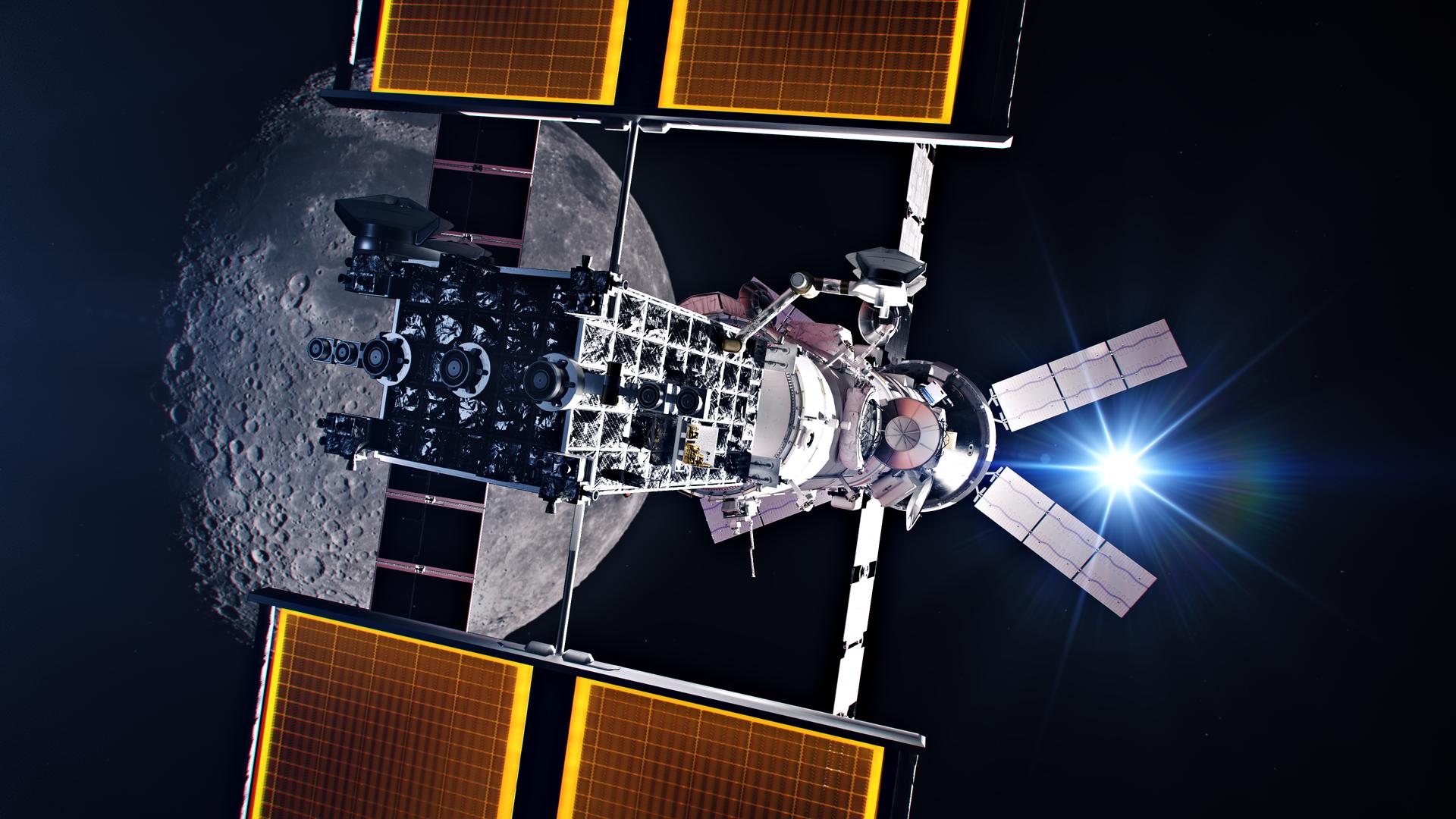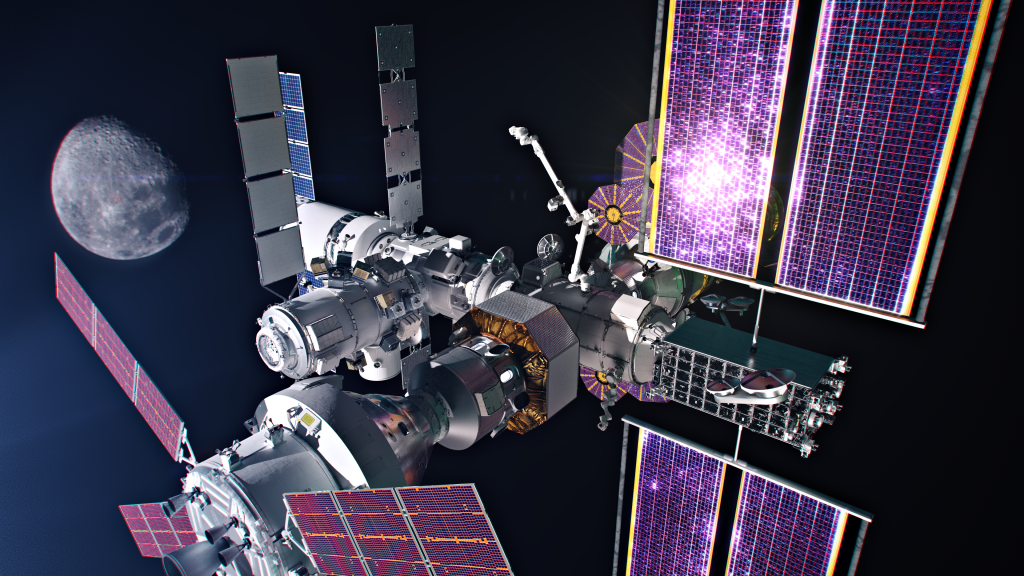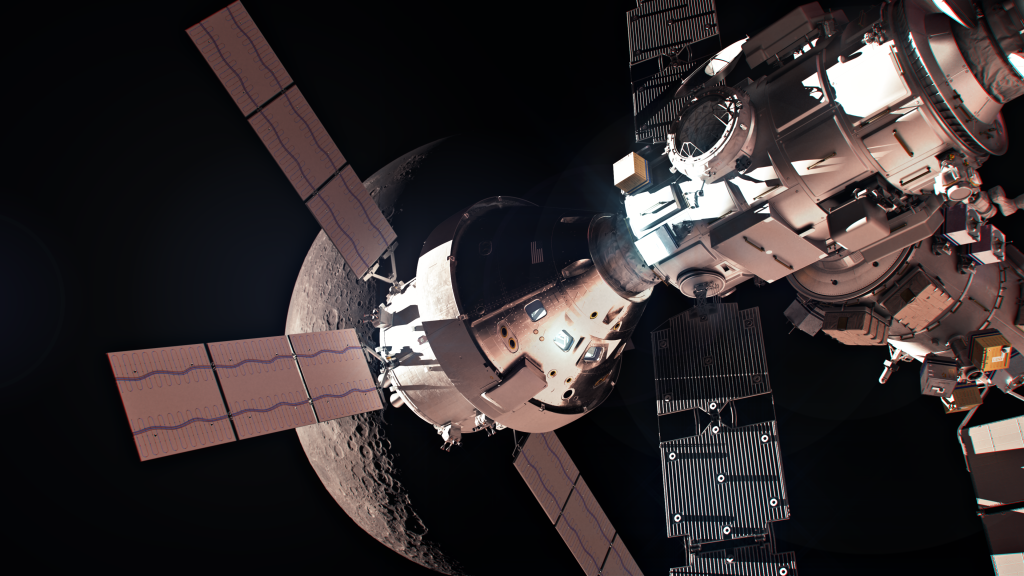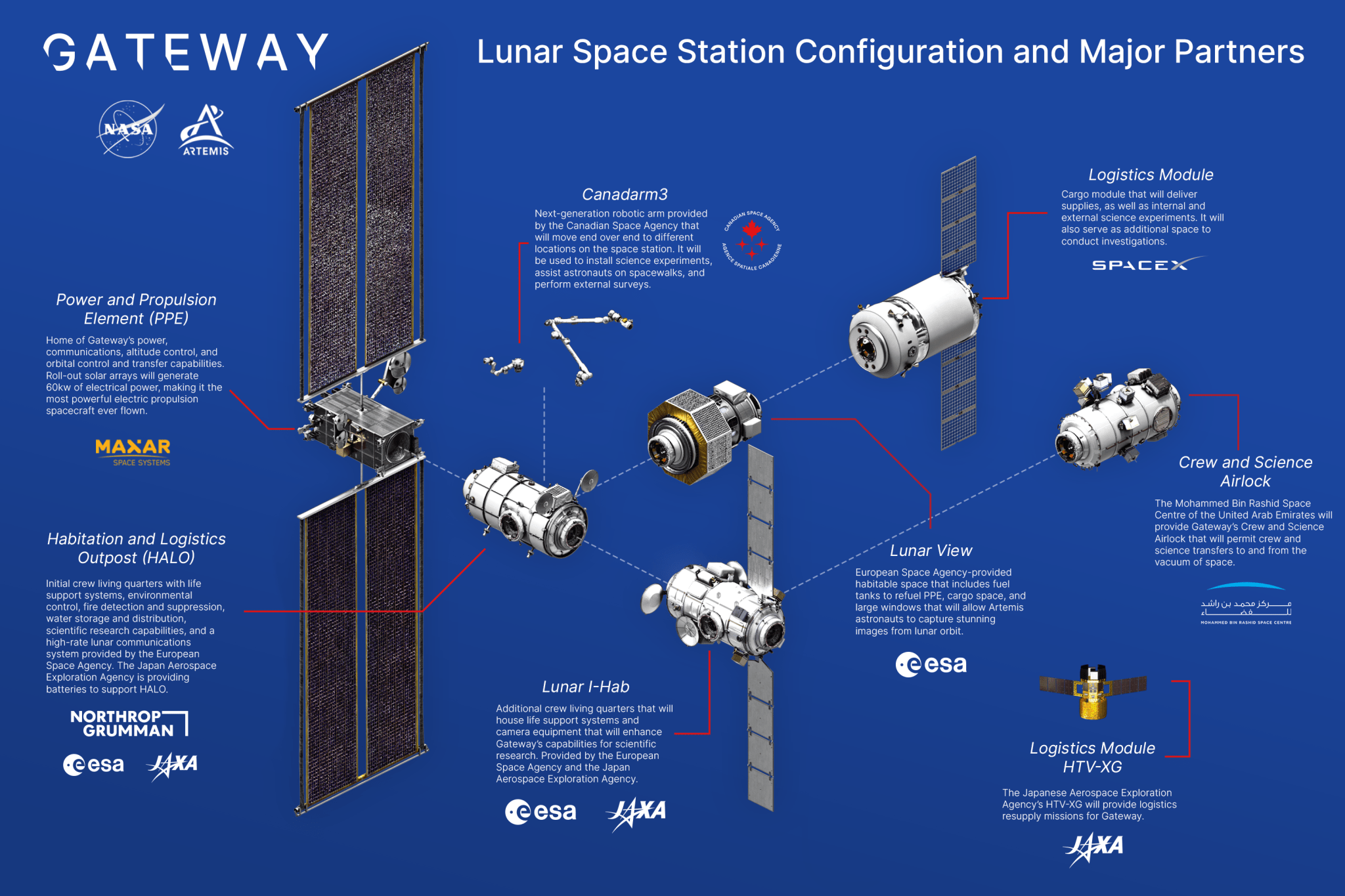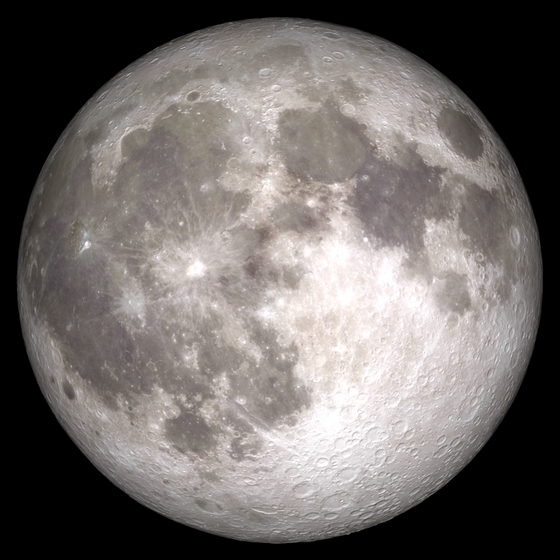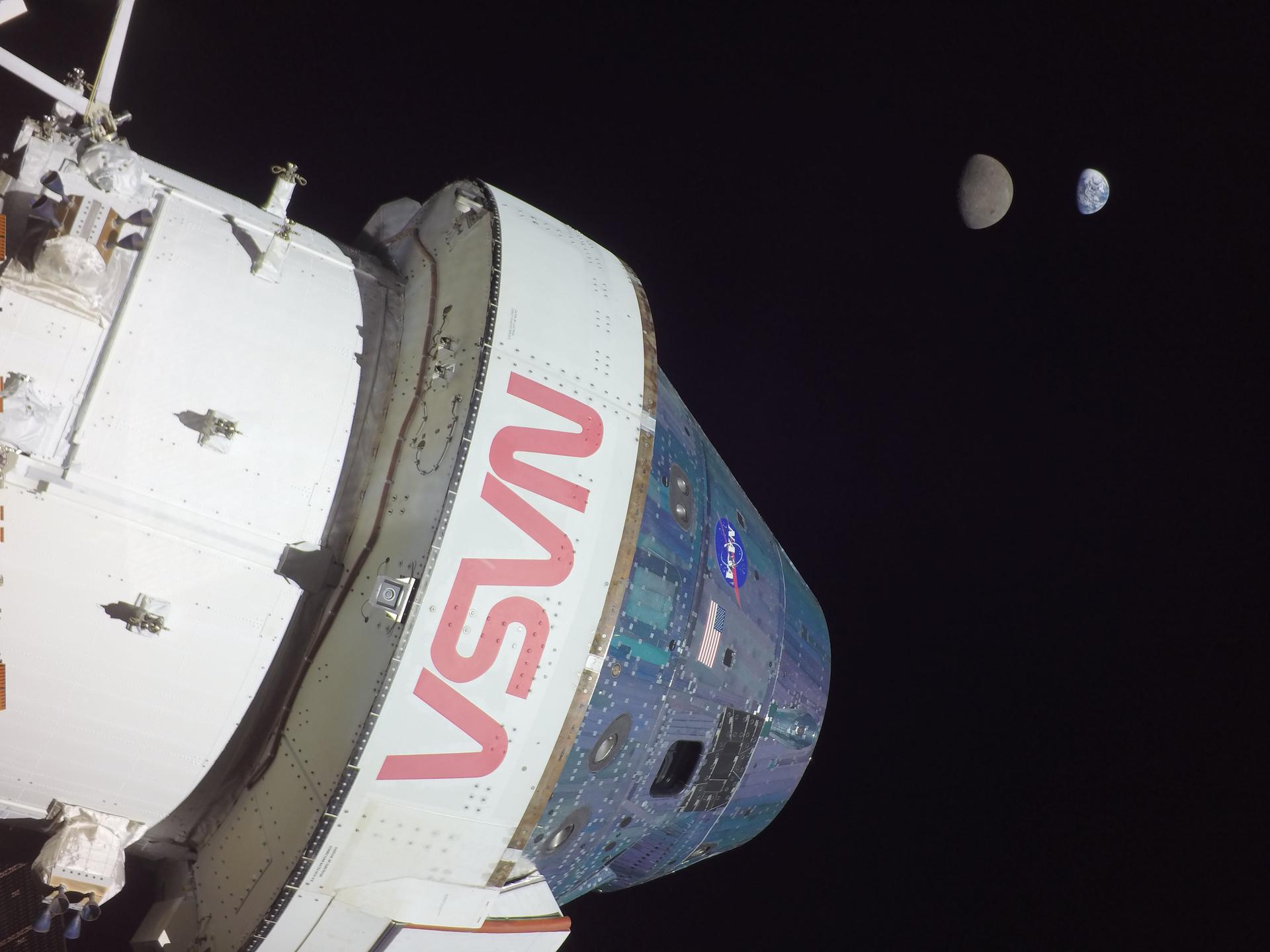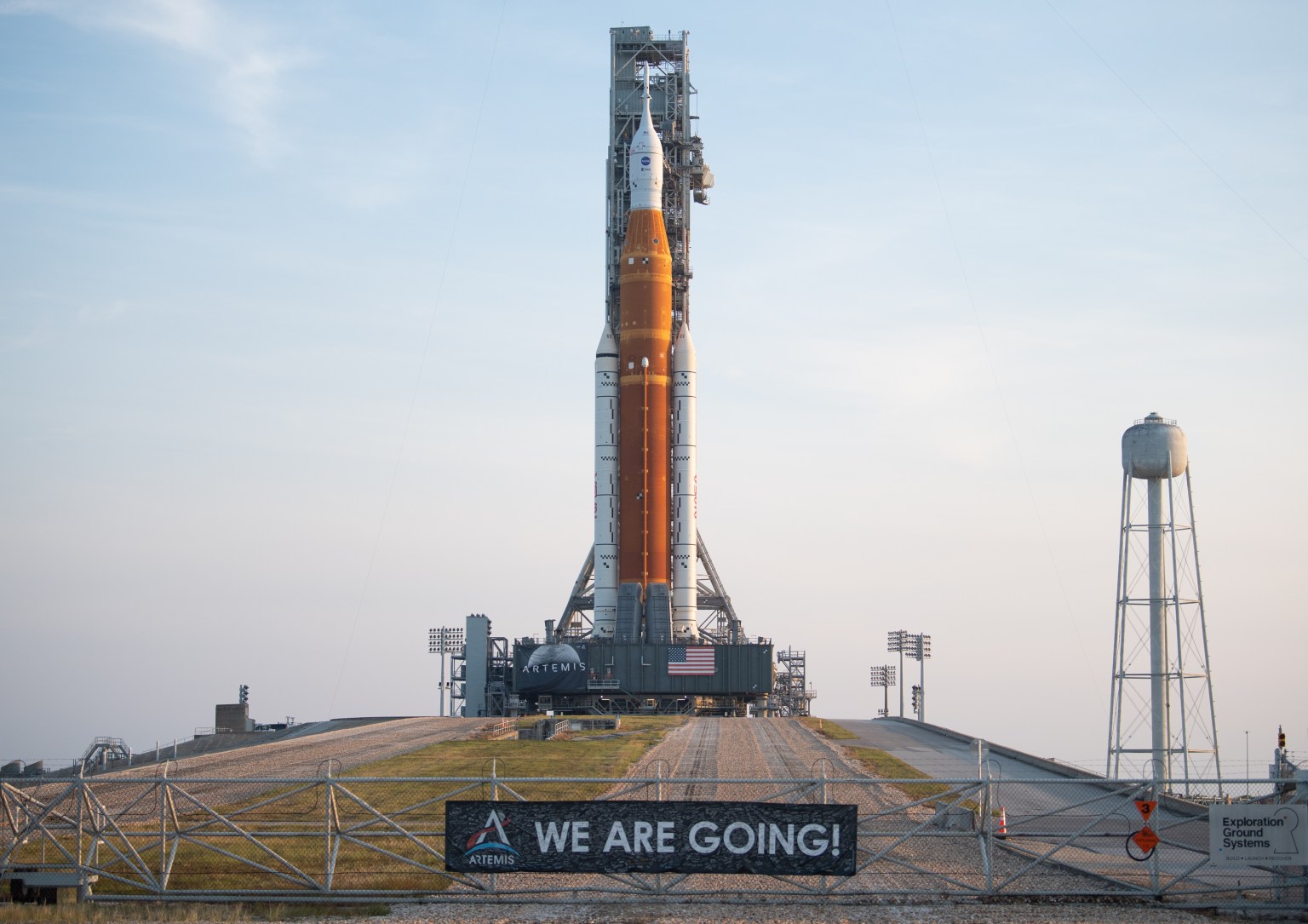Snapshot: Gateway Capabilities
Gateway will offer extensive capabilities for sustained exploration and research in deep space. It will feature docking ports for a variety of visiting spacecraft, as well as space for crew to live, work, prepare for lunar surface missions, and conduct scientific investigations.
Quick Facts
Capabilities
- Gateway will be humanity’s first space station beyond low-Earth Orbit, designed to operate uncrewed, via remote operations, for up to three years.
- Gateway will have a minimum 15-year lifespan, with the potential for extension well beyond that initial timeframe.
- Early configurations of Gateway with Orion attached can accommodate up to four astronauts for 30-90 days.
- Gateway will use international interoperability standards, akin to those used on the ISS, enabling the integration of a variety of spacecraft and modules into its system. This strategy will enhance the efficiency of future collaborative deep space exploration missions.
- Once fully assembled, Gateway will be about one-fifth the size of the ISS and weigh approximately 63 metric tons with an interior habitable volume (sustained capability) of about 125 cubic meters.
- The Canadarm3, a robotic system approximately 8.5 meter long, will maneuver end-over-end around Gateway and serve multiple purposes, including maintenance, repair, and inspection of Gateway, capture visiting vehicles, assist astronauts during spacewalks, and enable scientific activities.
- Built by Maxar Technologies, PPE is a high-power 60-kilowatt solar electric propulsion spacecraft that will provide power, high-rate communications, attitude control, and orbital transfer capabilities for Gateway. PPE will make Gateway the most powerful solar electric spacecraft ever flown.
- Gateway will travel in a unique polar orbit around the Moon known as near-rectilinear halo orbit (NRHO), completing one orbit in about one week (6.5 days). This orbit will bring Gateway within approximately 1,500 kilometers of the Moon at its closest approach and as far as about 70,000 kilometers at its farthest point.
Utilization
- Scientific investigations onboard Gateway will focus on research that cannot be done in low-Earth orbit, like the ISS.
- Between crewed missions, Gateway will be uninhabited; however, research will continue year-round. Both internal and external scientific investigations will be enabled by autonomous systems and remote operations.
- Three research payloads will fly with the initial Gateway elements, PPE and HALO: European Radiation Sensors Array (ERSA), Heliophysics Environmental and Radiation Measurement Experiment Suite (HERMES), and Internal Dosimeter Array (IDA). All three will focus on the radiation from the Sun that occurs in deep space.
- Internal utilization capabilities include payload banks (total of 16, locker-based and mounted payloads), cabin deployed payloads, and autonomous research capabilities.
- Gateway has standard interfaces, including robotic arm support, for external payloads.
- The space station can support the return of Lunar, planetary, or other extraterrestrial samples; transfer of samples could be accommodated via external or internal transfer for return to Earth. Internal transfer would include potential decontamination, processing, and analysis.
Gateway Quick Facts
- Astronauts will enter Gateway for the first time on the Artemis IV mission.
- NASA is working with commercial and international partners to establish Gateway. Five space agencies, including NASA, the European Space Agency (ESA), the Japan Aerospace Exploration Agency (JAXA), the Canadian Space Agency (CSA), and the Mohammed Bin Rashid Space Centre (MBRSC), are contributing to Gateway.
- Gateway utilizes contracts with roughly 100 companies in the United States with suppliers from 14 states, and many more internationally.
- The first Gateway elements, the Power and Propulsion Element (PPE) and the Habitation and Logistics Outpost (HALO), will launch together to lunar orbit on a SpaceX Falcon Heavy rocket ahead of Artemis IV.
- At its fastest, Gateway will travel at nearly 3.2 kilometers per second.



























